1. Jenny placed an object between two plane mirrors inclined at an angle of 90o. How many images will be formed if the object lies at the bisector of the angle?
a) 2
b) 3
c) 4
d) 5
Answer: b) When an object is placed between two plane mirrors inclined at a 90-degree angle, the number of images formed can be determined using the formula:
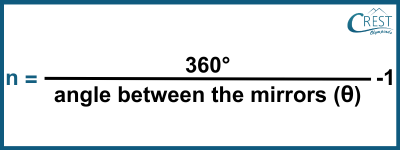
In this case, the angle between the mirrors is 90 degrees, so we substitute it into the formula:
Number of images = (360o/ 90o) - 1
= 4 - 1
= 3
Therefore, when the object lies at the bisector of the 90-degree angle between the mirrors, three images will be formed.
2. A concave mirror has a focal length of 15 cm. Calculate the radius of curvature of the mirror.
a) 15 cm
b) 30 cm
c) 7.5 cm
d) 45 cm
Answer: b) The relationship between the focal length (f) and the radius of curvature (R) of a concave mirror is given by: f = R/2
Given that the focal length (f) is 15 cm, we can substitute this value into the equation:
15 cm = R/2
15 cm x 2 = R
30 cm = R
Therefore, the radius of curvature of the concave mirror is 30 cm.
3. A student conducted an experiment, where he used a convex lens to focus sunlight onto a piece of paper. What will be observed on the paper?
a) A bright spot
b) A dim spot
c) Light will disperse into seven colours
d) No change
Answer: a) When a convex lens is used to focus sunlight onto a piece of paper, it forms a concentrated and converging beam of light. This focused beam of light will appear as a bright spot on the paper. The lens causes the sunlight to converge at a specific point called the focal point, creating a concentrated beam of light that results in a bright spot.
4. A convex mirror has a focal length of 20 cm. If an object is placed 30 cm in front of the mirror, what type of image is formed?
a) Real and inverted
b) Real and upright
c) Virtual and inverted
d) Virtual and upright
Answer: d) A convex mirror always forms a virtual and upright image, regardless of the position of the object. This virtual image is smaller in size compared to the object.
5. Select the image that accurately represents the angle of incidence and reflection when a light ray is incident on a rough surface and reflects at an angle of 45 degrees with the normal.
a) 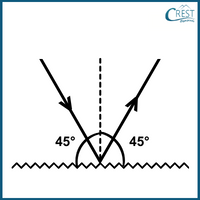
b) 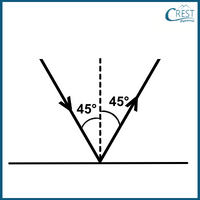
c) 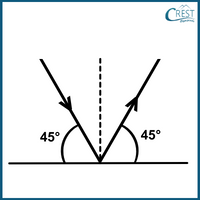
d) 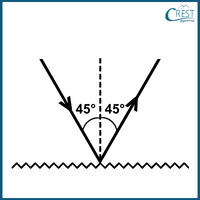
Answer: d) According to the information provided in the question, the light ray is incident on a rough surface and reflects at an angle of 45 degrees with the normal. The angle of incidence is defined as the angle between the incident ray and the normal. Since the reflected ray makes an angle of 45 degrees with the normal, the incident ray must have the same angle of 45 degrees with the normal. Image d) is the accurate depiction of all the angles.






